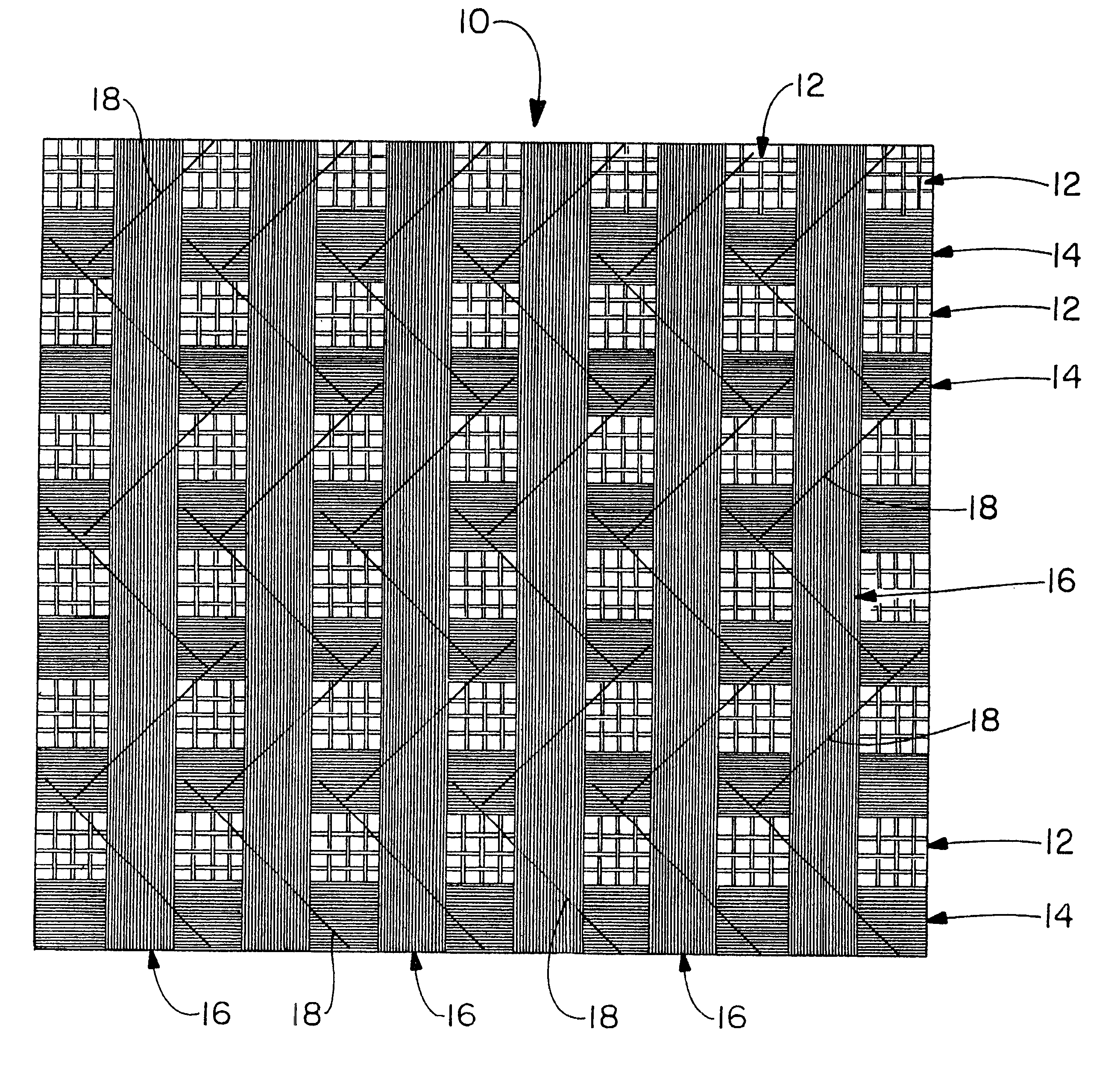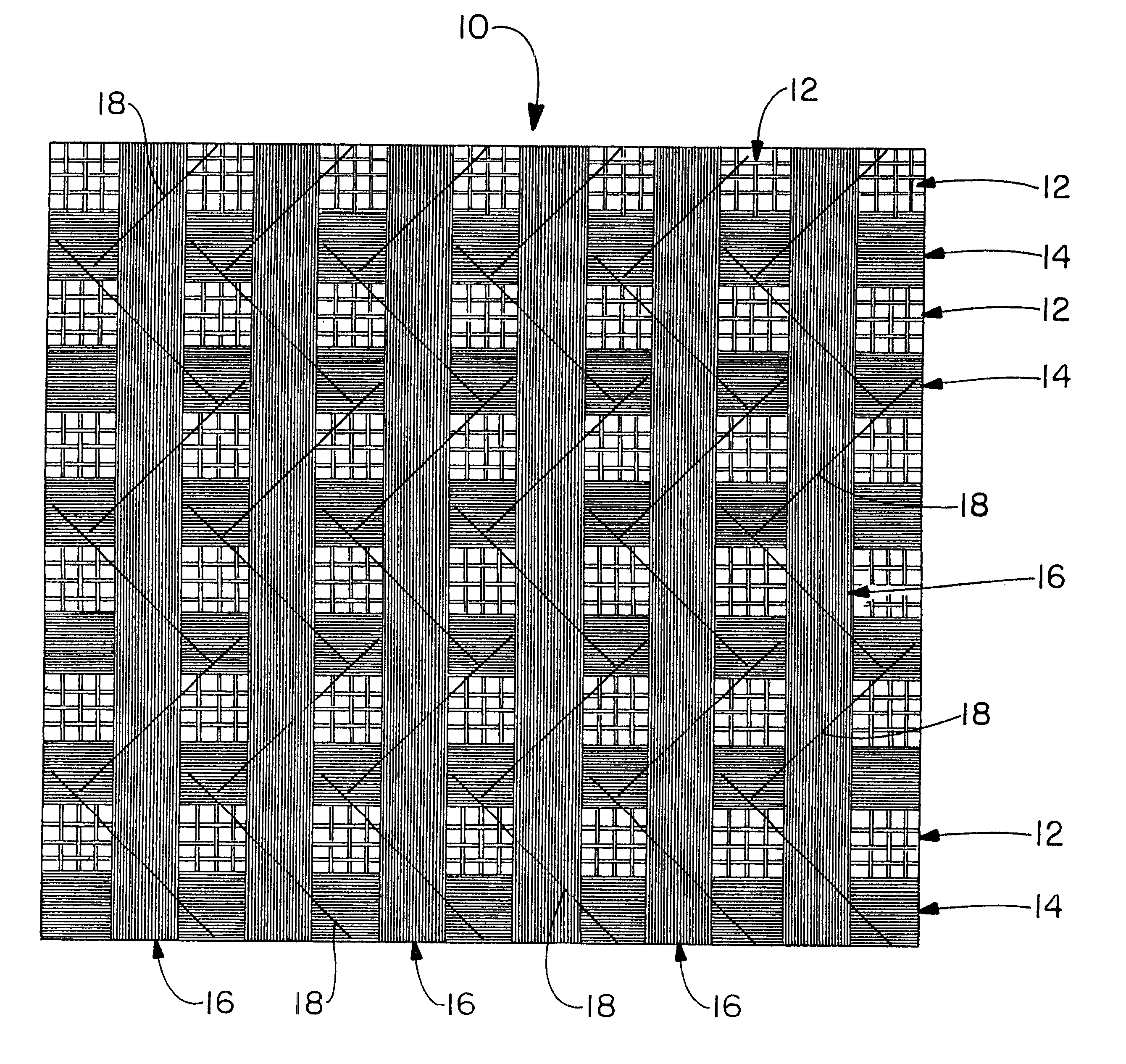Roofing membranes using composite reinforcement constructions
a composite reinforcement and roofing membrane technology, applied in knitting, weaving, ornamental textile articles, etc., can solve the problem of prohibitively high cost of high-performance fiberglass yarn for forming composite reinforcements
- Summary
- Abstract
- Description
- Claims
- Application Information
AI Technical Summary
Problems solved by technology
Method used
Image
Examples
Embodiment Construction
In a typical reinforcement as known in the prior art, a fiberglass yarn having a yield in the range of 1800 to 7500 has been used. The use of fiberglass yarns heavier than 1800 yield is effectively unknown, probably due to difficulties in handling these yarns in the conventional machines. Because these materials are yarns, they comprise a plurality of individual strands having a length which is very large relative to a diameter thereof, in fact, the strands to which we refer are substantially monofilamentous. The individual strands are not staple strands, as a cotton or wool yarn might comprise, but there is a significant amount of physical processing necessary to form the strands into a stable and processible yarn structure, particularly one which exhibits tensional stability. These steps involve twisting, chemical finishing, etc. As a result of the processing necessary to manufacture it, a yarn will tend to be circular in cross-sectional area and exhibit a tendency to not want to ...
PUM
| Property | Measurement | Unit |
|---|---|---|
| temperature | aaaaa | aaaaa |
| strength | aaaaa | aaaaa |
| weight | aaaaa | aaaaa |
Abstract
Description
Claims
Application Information
 Login to View More
Login to View More - R&D
- Intellectual Property
- Life Sciences
- Materials
- Tech Scout
- Unparalleled Data Quality
- Higher Quality Content
- 60% Fewer Hallucinations
Browse by: Latest US Patents, China's latest patents, Technical Efficacy Thesaurus, Application Domain, Technology Topic, Popular Technical Reports.
© 2025 PatSnap. All rights reserved.Legal|Privacy policy|Modern Slavery Act Transparency Statement|Sitemap|About US| Contact US: help@patsnap.com


